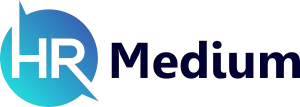Gamification is becoming a popular strategy across industries to engage employees and customers. For recruitment, HR can leverage it to attract and assess top talent. Through this, they can gain a better overview of the job candidate’s skill and potential.
How can HR apply gamification to attract top talent?
Also Read: Best HR Strategies to Hire Virtual Employees
Learn the benefits and challenges of gamification for recruitment.
By incorporating elements, such as points, leaderboards, challenges, and rewards, gamification has the potential to transform traditional hiring practices.
These create interactive and engaging experiences for potential candidates while employers can better assess their skills, creativity, and problem-solving capacity.
Why Gamification in Recruitment Works
Gamification works by leveraging intrinsic motivators such as competition and achievement. For a highly competitive job market, a firm that employs gamification sets itself apart from others.
It makes the otherwise nerve-wracking recruitment process more enjoyable. It also gives an opportunity to candidates to showcase their abilities beyond their resume.
For example, a tech company might host virtual hackathons to assess the developer’s programming skills.
Advantages of Gamification in Recruitment
There are many advantages a firm can avail themselves of by integrating gamification in recruitment.
Better Candidate Engagement
It helps capture the candidate’s attention by making the hiring process less daunting and more interactive. Additionally, the firm can display an innovation-first approach to recruiting.
Attracts a Diverse Talent Pool
Gamification is attractive, so it appeals to a broader audience, particularly the younger generation. This eliminates bias in recruitment as it gives focus to a candidate’s skill and performance along with their education and experience.
Boosts Firm’s Brand Reputation
It is an innovative and creative method to recruit. A candidate experiencing this method is more likely to share this with others, increasing the firm’s visibility.
Key Challenges and Considerations
Gamification may be effective in attracting and engaging top talent, but it has to be designed carefully. A poorly designed game has fewer players. Similarly, irrelevant or bad games and challenges can alienate certain candidates.
Along with this, certain industries may not be able to leverage gamification for recruitment like others can.
Conclusion: Gamification for Better Recruitment
It is a powerful tool that can help HR engage candidates, displaying the firm’s company culture and assessing their skills creatively. With a smart blend of functionality and fun, a traditional hiring process can be modified to secure top talent.













